Naked Cats: 10 Hairless Cat Breeds
Thinking about adopting a hairless cat? Here are 10 cat breeds to consider.
Thinking about adopting a hairless cat? Here are 10 cat breeds to consider.
by Kelly Villa, | August 15, 2023

Viktor Solomin / Stocksy
Though they have unique needs, most hairless cat breeds are affectionate, loyal, and fun. While some cats have a naturally occurring gene mutation that creates the condition, others are bred for it in ways that can cause health problems as the bloodline shortens, or because their hairlessness makes them more susceptible to skin conditions.
Hairless cats are meant to be indoor cats and come in two varieties, completely smooth or with peach fuzz. Like any nude creature, they can sunburned easily outdoors. These cats have specific grooming needs that might not be for every pet parent — but you’ll never have to brush them or worry about fur on your clothes and furniture.
Before bringing home any new cat, make sure you understand the cost and time required to properly care for them. (If you’re curious about which cat breeds are the ultimate floofs, check out these fluffy cat breeds.) Read on to learn more about 10 nude cat breeds.
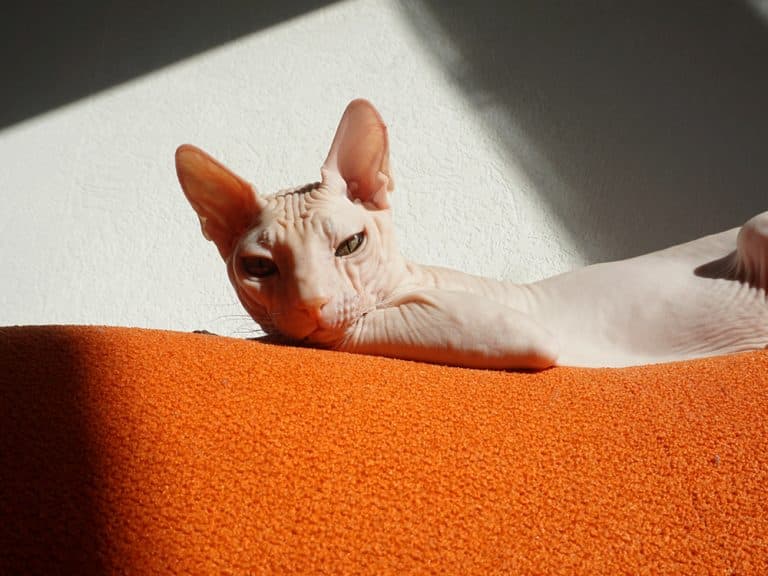
Julia Isaeva / Stocksy
The distinctive Sphynx cat is a popular choice for folks who want a hairless cat. These cats can have variegated skin tones, but are often a pale pink flesh tone. Hairlessness and wrinkles in these cats are produced by genetic mutations. The Sphynx wasn’t selectively bred for this trait until the 1960s — some displayed it and some didn’t, so by pairing those who were born hairless, it became a consistent trait. These cats are very affectionate and love learning new tricks and spending time with people.
They do get very oily and require regular bathing, or you might end up popping kitty zits — which, for the record, vets don’t recommend because this can make the acne worse or spread infection. Get ahead of the issue with warm suds. They are prone to Hypertrophic Cardiomyopathy, Hereditary Myopathy, and periodontal disease, and can also have trouble regulating their body temperature (a great excuse to buy cat sweaters).
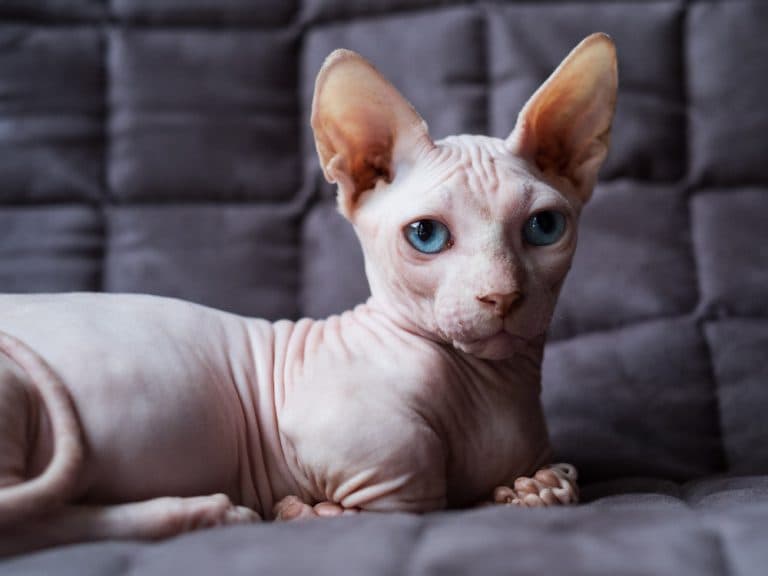
Peterpancake / Shutterstock
A Bambino cat is a Sphynx crossed with a Munchkin, a cat that naturally has short, stubby legs. This bald cat breed generally looks like the Sphynx but with smaller legs. Cats of this breed can also inherit health problems from both the Sphynx and the Munchkin. The Sphynx is susceptible to Hypertrophic Cardiomyopathy, Hereditary Myopathy, and periodontal disease, while Munchkins are susceptible to bone deformities, such as those along the spine.
These health issues make them a controversial new cat breed of their own, having only been launched in 2005. Like the Sphynx, the Bambino is vulnerable to the sun, the cold, and skin conditions.

jurra8 / AdobeStock
The Sphynx and the Donskoy, sometimes called the Russian Hairless, look similar, but their hairlessness comes from different genetic mutations. The Donskoy is usually leaner than the rounder naked Sphynx, with more sharply almond-shaped eyes.
Some Donskoy cats are born with fur coats that they may lose to some degree as they age — distinguished as flocked, velour, and brush coats. Flocked Donskoy cats are almost totally hairless but for thin coats. The ones born nude are called “rubber bald.” These cats are very affectionate, love to cuddle, and can be as loyal as a dog.
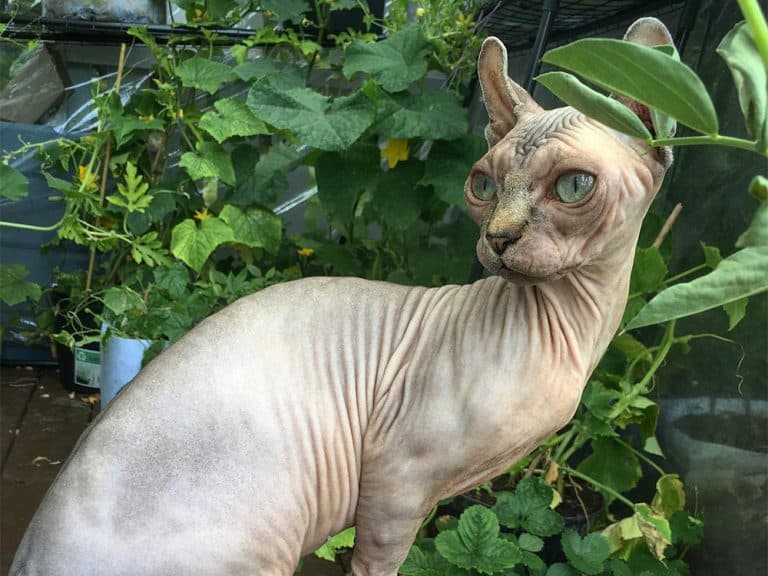
dwelfanddrool / Instagram
Another carefully bred and costly cat, the Dwelf is a mix of the Sphynx, Munchkin, and American Curl. The Dwelf looks similar to the Bambino, but the most notable visual difference between these hairless cat breeds is the Dwelf’s curly and textured ears. Because the breed is rare, they have a small gene pool, which makes it harder to breed healthy cats. They are susceptible to health problems such as skin issues, heart disease, spine curvature, and joint disease.

Max Simonov / Unsplash
The Elf cat is a hairless mix of the Sphynx and American Curl. These cats have the same curly ears as the Dwelf, with somewhat longer legs and very soft wrinkly skin folds. They love to climb and play and are quite social and cuddly. They will definitely demand your attention. The Elf was bred by Karen Nelson and Kristen Leedom in 2004, so the breed is quite rare.
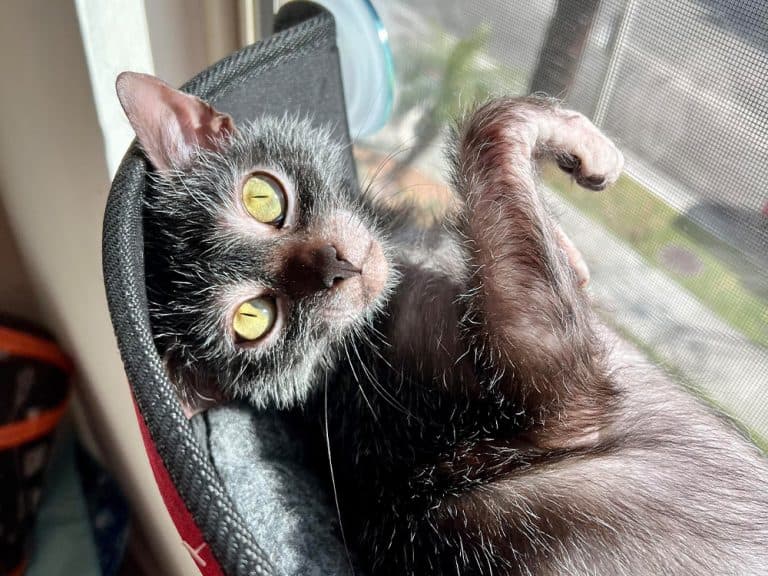
Julianne Carlile (life.with.lykoi) / Instagram
Lykoi cats, also known as “werewolf cats” can have varying amounts of fur as a result of a naturally occurring genetic mutation discovered in Domestic Shorthairs about two decades ago. When their full coat comes in, it is usually black and gray and sparse, resulting in a lot of naked skin showing through. This breed usually has large yellow eyes and big pointed ears, with faces shaped similarly to a Sphynx. They bond well with one person and other cats but can be shy at first. Once they warm up to you, they’re great companions and love hunting and playing fetch.

mondayandgreta / Instagram
The Minskin is another rare nearly naked cat that is a fairly new breed, who is a mix of Munchkin, Burmese, Sphynx, and Devon Rex. They often have a thin coat, but you can usually see the classic Sphynx skin folds through it. They’re usually quite small with short legs even when fully grown. And since they come from several other friendly breeds, you can expect them to be affectionate and playful, too.

zenlovecat / Instagram
The Peterbald cat originated in Russia and became popular in the mid-1990s. They’re still popular, making them both rare and expensive. They come in different colors but are most often gray or with the color-point pattern of a Siamese cat. They’re sometimes compared to an Oriental shorthair in build, but they have that neat hair-losing genetic mutation. They can be quite friendly and talkative.
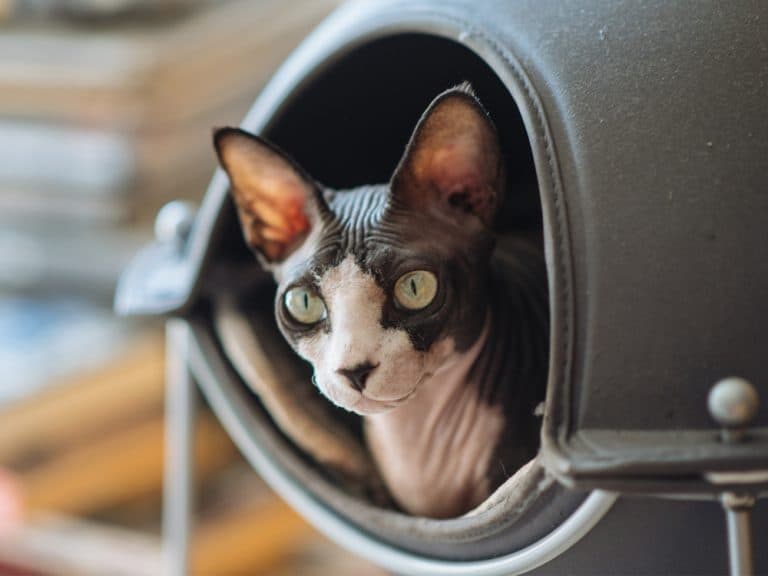
Drazen / iStock
If you want a cat that is both hairless and tailless, the Sphynxiebob — a mix between a Sphynx and a Bobtail cat — is for you. April Arguin debuted this breed, which looks remarkably similar to a Sphynx with the adorable little short tail of a Bobtail, in 2015. Described as Velcro kittens, they make wonderful family members because they love human company and will follow you around the house to get their much-needed daily dose of attention.
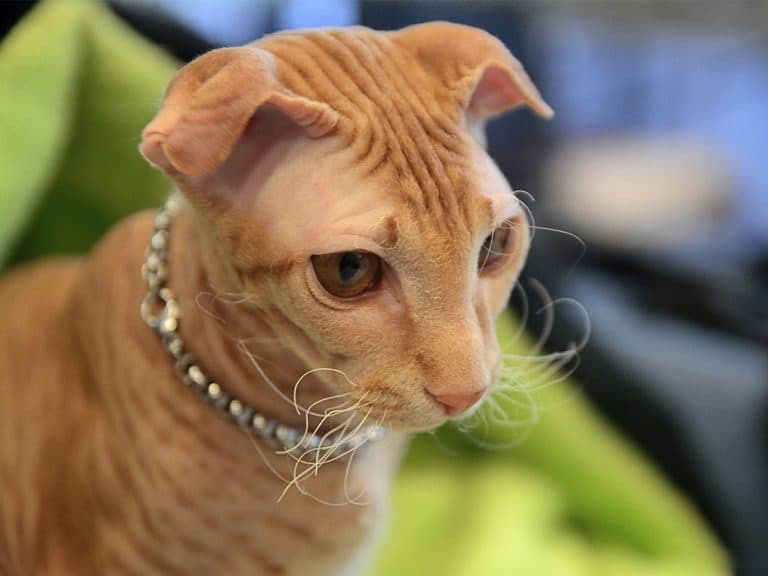
Alexandr Junek Imaging / Shutterstock
This breed is a cross between a Donskoy and a Scottish Fold, which results in a nearly hairless cat with soft, wrinkly skin and large inward-folding ears. They’re often long-bodied and muscular and are most popular in Russia and Ukraine. They come in all different colors but tend to be gray, black, or mixed white and black in a piebald pattern. They’re quite affectionate and social.
One of the big demands of having a hairless cat is bathing them. Without fur, oil can quickly build up on their skin, and they must be regularly cleaned to prevent acne or rashes. Luckily, most hairless cats are amenable to gentle bathing, especially if you get them used to it at a young age.
Vets will have recommendations, but choose a pet shampoo without a strong scent and use warm water — never hot. Make sure to rinse thoroughly and then pat them dry afterward. Because they have no fur, they need to be kept warm and not left moist. If they do get an acne breakout, use a mild antibacterial soap for pets and contact your vet if things don’t improve.
Naked cats have sensitive skin that can easily get sunburned when exposed to UV rays. Pet-safe sunscreen can help protect their skin from damage, which can lead to discomfort, pain, and even skin cancer. To avoid sunburn and associated skin problems, apply whenever they’re outside or spending a good amount of time toasting in the window.
Hairless cats need help with the typical things a cat does for grooming, such as nail cutting. They especially need ear cleaning. They have no hair in their ears, so they can easily have a wax build-up that blocks their ear canal entirely.
Yes, hairless cats get cold easily and need help regulating their body temperatures. In the winter, it’s good to have some cozy cat outfits and sweaters for them or make sure your home is appropriately heated. If the temperature is too cold for you to be comfortable while naked, it’s probably too cold for your hairless cat.
There’s no such thing as a fully hypoallergenic cat, but because hairless cats don’t shed, that can help with some allergy sensitivities. All breeds of cats can produce the protein that causes allergic reactions in their dander, saliva, and even their urine. Some cats within select breeds, including some hairless cats, naturally produce less of the protein that triggers cat allergies in people. Regularly bathing your cat will clean up dander and other protein-carrying dust on the cat’s body.
Yep, there are different types (breeds) of hairless cats. The 10 most common types of hairless cat include the Canadian Sphynx, Bambino, Donskoy, Dwelf, Elf, Lykoi, Minskin, Peterbald, Pixiebob, and Ukrainian Levkoy.
Many hairless cats are available for adoption at local shelters and rescue groups across the United States. Start your search for a friendly hairless cat at Adopt a Pet.
Genetics: Sphynx Hypertrophic Cardiomyopathy (HCM)
Histological and Dermatoscopic Description of Sphynx Cat Skin

Kelly Villa is a freelance writer and contributor to various pet publications.

Breed Info

Breed Info

Breed Info

Breed Info
Looking to adopt a white cat? Learn about which cat breeds have the cutest white varieties.

Breed Info
They may look like tiny leopards, but these spotted breeds are all about home life.

Breed Info
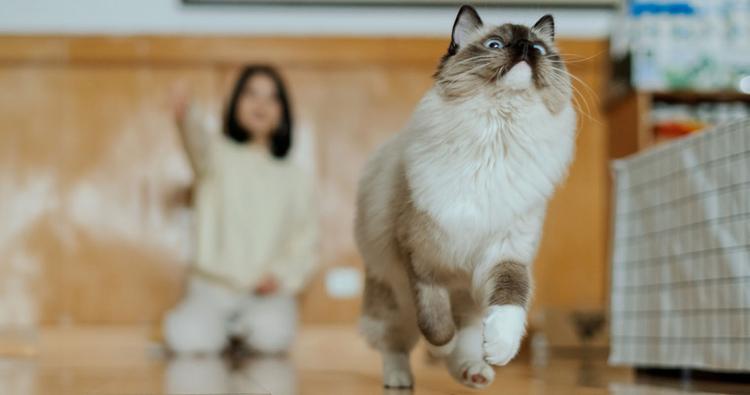
Breed Info
Thinking of adopting a cat but wondering if they’ll get along with your pup? Find out which cat breeds are more dog-friendly — and dog-like.

Breed Info


Breed Info
These affectionate cats are basically love wrapped in fur.

Breed Info
With over 95 percent of cats in this group, it isn’t even a competition.

Breed Info
Are you a sucker for a kitty that’s independent, curious, and super-intelligent? Learn more about amazing cat breeds who are as smart as they are cute.